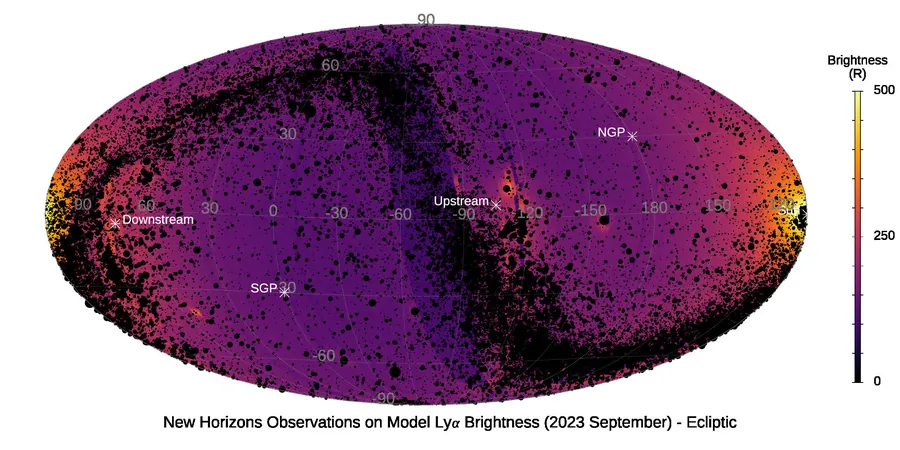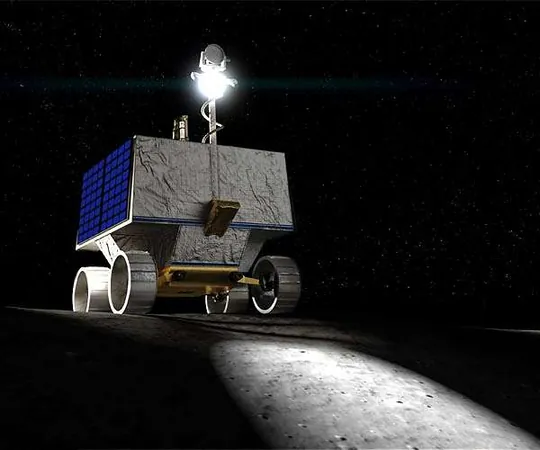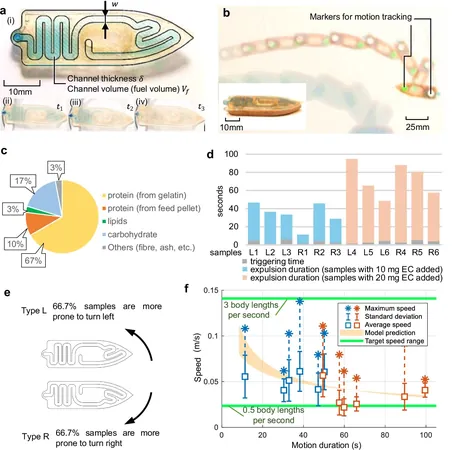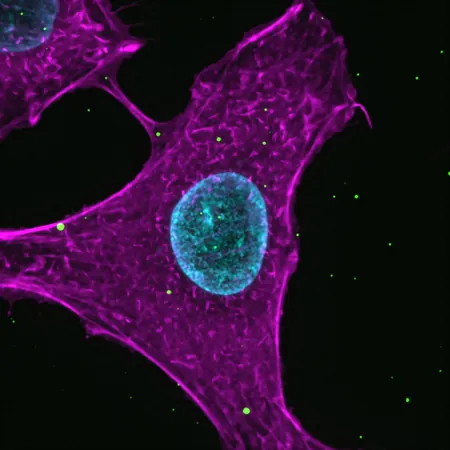
A Cosmic Breakthrough: First-Ever Lyman-Alpha Map From Our Galaxy!
2025-04-28
Author: Ming
NASA's New Horizons Unveils Galactic Secrets
The NASA New Horizons spacecraft has achieved a monumental milestone by creating the first-ever Lyman-alpha emissions map for our galaxy. This groundbreaking achievement offers unprecedented insights into the galactic region surrounding our solar system.
Revolutionary Research Published
The findings, detailed in a study titled "The Lyman-alpha Sky as Observed by New Horizons at 57 AU," are credited to the SwRI-led New Horizons team and published in The Astronomical Journal.
Unlocking Galactic Mysteries
Dr. Randy Gladstone, the study's lead investigator, explained the significance of Lyman-alpha emissions: "Understanding the Lyman-alpha background helps illuminate nearby galactic structures and processes. This research implies that the hot interstellar gas bubble where our solar system resides might actually be regions bursting with hydrogen gas emissions at the Lyman-alpha wavelength."
What is Lyman-Alpha?
Lyman-alpha is an essential ultraviolet wavelength emitted and scattered by hydrogen atoms. Astronomers find it indispensable for studying distant stars and galaxies as it sheds light on their composition, temperature, and movement.
Groundbreaking Discoveries from New Horizons
During its epic journey to Pluto, New Horizons utilized the Alice instrument—an advanced ultraviolet spectrograph developed by SwRI—to gather baseline data on Lyman-alpha emissions. After meeting its primary objectives, the spacecraft continued to profile Lyman-alpha emissions more extensively as it journeyed further into space.
In 2023, these expansive surveys covered about 83% of the sky, providing valuable new insights.
A Sky Filled with Surprises
In a remarkable twist, the survey results indicated a uniform background brightness of Lyman-alpha emissions that was a staggering ten times stronger than previous estimates. Gladstone noted, "These observations reveal that Lyman-alpha photons are being emitted and scattered by hydrogen atoms within a hot bubble surrounding our solar system, a region likely shaped by supernova events from millions of years ago."
Challenging Established Theories
Interestingly, the study found no substantial evidence for a theorized hydrogen wall thought to surround the sun's heliosphere. Scientists had believed this wall accumulated hydrogen atoms at the edge of our heliosphere, influenced by the solar wind. However, the New Horizons data failed to support this idea as a significant source of Lyman-alpha emissions.
A New Era of Discovery
Dr. Alan Stern, co-author and Principal Investigator for New Horizons, emphasized the importance of these findings: "These landmark observations provide the first clear view of our surrounding sky at these wavelengths, debunking older theories and revealing new characteristics. This Lyman-alpha map lays the groundwork for future explorations to uncover even more about our cosmic neighborhood."





 Brasil (PT)
Brasil (PT)
 Canada (EN)
Canada (EN)
 Chile (ES)
Chile (ES)
 Česko (CS)
Česko (CS)
 대한민국 (KO)
대한민국 (KO)
 España (ES)
España (ES)
 France (FR)
France (FR)
 Hong Kong (EN)
Hong Kong (EN)
 Italia (IT)
Italia (IT)
 日本 (JA)
日本 (JA)
 Magyarország (HU)
Magyarország (HU)
 Norge (NO)
Norge (NO)
 Polska (PL)
Polska (PL)
 Schweiz (DE)
Schweiz (DE)
 Singapore (EN)
Singapore (EN)
 Sverige (SV)
Sverige (SV)
 Suomi (FI)
Suomi (FI)
 Türkiye (TR)
Türkiye (TR)
 الإمارات العربية المتحدة (AR)
الإمارات العربية المتحدة (AR)